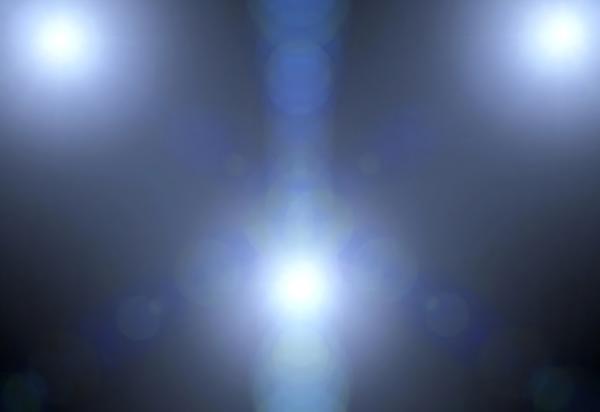Regardless of lens design, the goal is to project a perfect image onto the camera’s sensor. Handing the camera to a photographer is likely to create lighting situations that the designer couldn’t plan for, and the result is likely to be lens flare. However, with a few tricks, lens flare can be avoided or even embraced.
1.What is lens flare?
Lens flare is an optical effect that can manifest itself in many forms. The classic appearance is a colorful, repeating circle that cuts through the image. Alternatively, lens flare can create unexpectedly low-contrast areas and washed-out colors within an image.
Both types of lens flare tend to be more noticeable in the darker tones of the image. However, the type of lens flare you see depends on the design of the lens, as well as the size, brightness, and angle of the light relative to the camera lens.
What is lens flare?
2.What causes lens flare?
Lens flare is always caused by light. This may sound obvious (no light = no photo), but learning to interpret light is the first step to understanding when lens flare occurs.
Traditionally, lens flare occurs when you point your camera in the direction of the sun’s blur. Even if the sun itself isn’t in the lens, the chance of lens flare is always present, as light hitting the front of the lens from the side will still enter the lens. The more light you point your camera at, the greater the chance of lens flare. However, the appearance of the flare can vary—especially when the sun is actually in the lens.
3.Types of lens flare
Some lenses handle flare much better than others. Generally speaking, zoom lenses are more susceptible to lens flare than prime lenses due to their more complex design.
But lens flare doesn’t only occur when the sun is used as a light source. In fact, the likelihood of lens flare is much greater for studio photographers. The more lights you use, the greater the chance that one or more of them will cause lens flare—and studio photographers love to add more lights!
Types of lens flare
Lens flare can be divided into two basic types. Although they may have other names, we call them ghosting and halos.
①Ghosting
Ghosting is the classic form of lens flare, appearing as colorful, repetitive circular or shaped spots on the image. But have you ever wondered where these shapes come from? Ghosting is the shape of the lens aperture.
If your lens aperture is wide open, these spots appear large and round, but if you stop the lens down, they become smaller and more polygonal. The exact size and shape are determined by the blades of the lens’ aperture mechanism. As for multicoloring, this depends on the type of glass used and the coatings applied to each lens element.
②Halo
Halo is a more subtle effect that sometimes goes unnoticed because it’s a product of lens flare. It’s easiest to see when you place a very bright light source next to a dark background, where the light seeps into the darkness. This is caused by the scattering of light as it passes through the lens. If done correctly, the effect can actually be quite pleasing.
Speaking of pleasing lens flares, try stopping down your lens aperture to its smallest possible value (largest F-number) and adding a small point light source to the scene (a wide-angle lens and the sun are a perfect combination). The result is a starlight lens flare—no additional filters required!
Lens flare can be divided into two basic types
4.How lens type affects lens flare
Yes, it’s a cliché, but the unavoidable truth about lenses is that you do get what you pay for, including how well the lens handles lens flare. No lens is immune to lens flare, but better lenses use better glass and better coatings, which significantly reduce internal lens flare. That being said, even inexpensive modern lenses will have superior flare handling characteristics compared to lenses from the pre-digital era.
①Fixed focus lenses and varifocal lenses
As mentioned earlier, fixed focus lenses produce the least flare. Their single focal length means a simpler internal lens design with fewer components, resulting in less risk of light scatter. Varifocal lenses have moving parts, adjustable length, and (on some varifocal lenses) an aperture that changes with zoom, making it more difficult to minimize flare.
②Focal length
Focal length is also important. It’s easy to spot flare with a wide-angle lens, but the flare may be on a smaller scale. The wide field of view and spherical front element make it much more likely that you’ll accidentally capture flare. Conversely, a telephoto lens presents less of a flare risk, but when it does occur, it tends to fill the entire frame.
As far as lenses go, there’s no such thing as a perfect lens, but there are things you can do to reduce its impact.
How lens type affects lens flare
③Lens hood
Every lens should come with a lens hood, but sadly, they don’t. Luckily, you can purchase aftermarket hoods, but beware of vignetting when shooting at wide angles. If you’re the type of photographer who flips upside down your lens hood when storing it and then puts it on backwards when shooting… stop! A lens hood is the best tool you can use to stop off-axis lens flare, which blocks light entering the lens from the sides.
If your light is more on-axis, you may need to block it in other ways. In the sun, you can raise your hand to create a shadow, or find something like a tree branch to create a shadow. In a studio, flags and grids can be used to block the light.
④Cleaning the lens
Think about it: when was the last time you inspected the front and rear elements of your lens? Dust, grease, and scratches always mean more lens flare. Do you really need a filter on the front of your lens? If so, does it have an anti-reflective coating? Cheap filters can introduce more lens flare.
Finally, consider exposure. When the light source is overexposed, flare becomes more noticeable. This may not be something you can control in the field, but it’s something studio photographers should keep in mind.
Use a lens hood with every lens
5.When to use lens flare
Now that you have the tools to fix lens flare, let’s do the opposite. Lens flare isn’t all bad; in fact, it can be beautiful wherever and whenever you want it to be.
Sunlight filtering through trees requires lens flare. Summer portraits with lens flare capture the heat of the day. Watch any modern science fiction film and you’ll see lens flare everywhere. It’s a deliberate aesthetic choice that adds depth and mystery to the scene.
For portrait photographers, lens flare is a great tool for masking studio backgrounds and even light stands. It creates excitement and curiosity. If you really want to embrace and enhance the look in-camera, a black haze filter is a great (but permanent) alternative to post-processing.
In the worst-case scenario, lens flare can ruin a perfectly good photo. Sure, you might be able to restore lost contrast or remove odd shapes in post-processing, but avoiding it in the first place is a much better solution. Put the lens cap in the right place, press the aperture preview button (if your camera has one) to check for flare, and if all else fails, make it work for you—with purpose and intent. Because knowing the “rules” of photography gives you the perfect excuse to deliberately break them!
Final Thoughts:
By working with professionals at ChuangAn, both design and manufacturing are handled by highly skilled engineers. As part of the purchasing process, a company representative can explain in more detail specific information about the type of lens you wish to purchase. ChuangAn’s series of lens products are used in a wide range of applications, from surveillance, scanning, drones, cars to smart homes, etc. ChuangAn has various types of finished lenses, which can also be modified or customized according to your needs. Contact us as soon as possible.
Post time: Sep-26-2025








